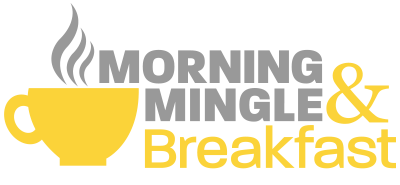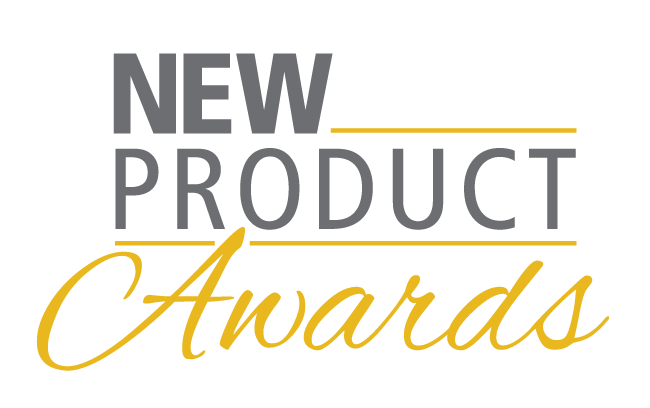2024 Agenda
All times listed are Central Time Zone (CT)
Date/Time
Track Title
Speaker
Sponsor
Location
Tuesday
10/22/2024
9:00 AM
4:00 PM
10/22/2024
9:00 AM
4:00 PM
TUESDAY CONFERENCE PROGRAM
Includes 3 session tracks, networking breaks and lunch before the Exhibit Hall opens at 4:00pm.
Track 1: Advancements in Automation and Automated Assembly
Track 2: Data Analysis, Artificial Intelligence, and C-Suite Topics
Track 3: Bolted Joint and Threaded Fastener Assembly
Track 2: Data Analysis, Artificial Intelligence, and C-Suite Topics
Track 3: Bolted Joint and Threaded Fastener Assembly
Level 1
Tuesday
10/22/2024
9:00 AM
9:35 AM
10/22/2024
9:00 AM
9:35 AM
Track 1
The Shift Towards Complete and Harmonized Assembly Automation
Chis Lupfer
Director of Indirect Channels – Assembly Technology, Bosch Rexroth North America
Director of Indirect Channels – Assembly Technology, Bosch Rexroth North America
Conference
Level 1
Level 1
Tuesday
10/22/2024
9:00 AM
9:35 AM
10/22/2024
9:00 AM
9:35 AM
Track 2
Smart Data, Smarter Manufacturing: The Future Unveiled
Vince Sassano
Founder & CEO, Strategic Performance Co. Inc.
Founder & CEO, Strategic Performance Co. Inc.
Conference
Level 1
Level 1
Tuesday
10/22/2024
9:00 AM
9:35 AM
10/22/2024
9:00 AM
9:35 AM
Track 3
Work Instructions That Work--Cleaning Up Procedures for Ease of Use
Becca Resnik
President, Translations by Becca
President, Translations by Becca
Conference
Level 1
Level 1
Tuesday
10/22/2024
9:45 AM
10:20 AM
10/22/2024
9:45 AM
10:20 AM
Track 1
How to Go From Proof of Principle to Pilot Production to Full-Scale Automation
Brian Romano
Director of Technology Development, Arthur G. Russell Co. Inc.
Director of Technology Development, Arthur G. Russell Co. Inc.
Conference
Level 1
Level 1
Tuesday
10/22/2024
9:45 AM
10:20 AM
10/22/2024
9:45 AM
10:20 AM
Track 2
Solving Manufacturing Challenges with Time Series Data
Zoe Steinkamp
Senior Developer Advocate, InfluxData
Senior Developer Advocate, InfluxData
Conference
Level 1
Level 1
Tuesday
10/22/2024
9:45 AM
10:20 AM
10/22/2024
9:45 AM
10:20 AM
Track 3
Five Ways to Error-proof Assembly Operations Leveraging Digital Technology
Bryan Bauw
Chief Operating Officer, PICO
Chief Operating Officer, PICO
Conference
Level 1
Level 1
Tuesday
10/22/2024
10:20 AM
10:40 AM
10/22/2024
10:20 AM
10:40 AM
Morning Break
Included for attendees with Tuesday Session Package
Conference
Level 1
Level 1
Tuesday
10/22/2024
10:40 AM
11:15 AM
10/22/2024
10:40 AM
11:15 AM
Track 1
Deploying a Cobot to Respond to Customer Demand
Dan Colvin
Vice President of North America Robotics & Digital Solutions, ESAB
Vice President of North America Robotics & Digital Solutions, ESAB
Conference
Level 1
Level 1
Tuesday
10/22/2024
10:40 AM
11:15 AM
10/22/2024
10:40 AM
11:15 AM
Track 2
Leveraging Quality Data to Enhance Process Integration: The Role of Sensors and Processing
Kevin den Toom
Product Manager, TOX Pressotechnik
Product Manager, TOX Pressotechnik
Conference
Level 1
Level 1
Tuesday
10/22/2024
10:40 AM
11:15 AM
10/22/2024
10:40 AM
11:15 AM
Track 3
How to Maximize Assembly Efficiency With AI, Geolocation and Light Automation
Frederick Viaut
Sales and Marketing Manager, Desoutter
Sales and Marketing Manager, Desoutter
Conference
Level 1
Level 1
Tuesday
10/22/2024
11:25 AM
12:00 PM
10/22/2024
11:25 AM
12:00 PM
Track 1
Maximizing Efficiency and Quality Through Robotic Automation of Assembly
Adam Crandall
Chief Revenue Officer, Addtronics
Chief Revenue Officer, Addtronics
Conference
Level 1
Level 1
Tuesday
10/22/2024
11:25 AM
12:00 PM
10/22/2024
11:25 AM
12:00 PM
Track 2
Leveraging AI and Computer Vision to Transform Quality Control and SOP Monitoring in Manufacturing
Nitin Gupta, Ph.D.
Founder and President, Dori AI
Founder and President, Dori AI
Conference
Level 1
Level 1
Tuesday
10/22/2024
11:25 AM
12:00 PM
10/22/2024
11:25 AM
12:00 PM
Track 3
How to Implement an Effective Torque Measurement and Calibration Program
David Cash
Technical Application Specialist, Mountz
Technical Application Specialist, Mountz
Conference
Level 1
Level 1
Tuesday
10/22/2024
12:00 PM
1:00 PM
10/22/2024
12:00 PM
1:00 PM
Conference Lunch
Included for attendees with Tuesday Session Package
Conference
Level 1
Level 1
Tuesday
10/22/2024
1:00 PM
1:35 PM
10/22/2024
1:00 PM
1:35 PM
Track 1
A New Technology for Cutting and Sealing Thin Membranes
Donald Patten
Senior Applications Engineer, MS Ultrasonic Technology LLC
Senior Applications Engineer, MS Ultrasonic Technology LLC
Conference
Level 1
Level 1
Tuesday
10/22/2024
1:00 PM
1:35 PM
10/22/2024
1:00 PM
1:35 PM
Track 2
How to Automate Assembly of Electrical Cabinets
George Tilli
Digital Product Manager, Komax Corp.
Digital Product Manager, Komax Corp.
Conference
Level 1
Level 1
Tuesday
10/22/2024
1:00 PM
4:00 PM
10/22/2024
1:00 PM
4:00 PM
Track 3
Bolted Joints, Often Looser Than Expected
*This session runs from 1-4pm
*This session runs from 1-4pm
Jon Ness, PE
Principal Engineer, Matrix Engineering Consultants
Principal Engineer, Matrix Engineering Consultants
Conference
Level 1
Level 1
Tuesday
10/22/2024
1:45 PM
2:20 PM
10/22/2024
1:45 PM
2:20 PM
Track 1
Tracking Real-Time Performance With Visual Intelligence
Cyrus Shaoul, Ph.D.
co-founder and CEO, Leela AI
co-founder and CEO, Leela AI
Conference
Level 1
Level 1
Tuesday
10/22/2024
1:45 PM
2:20 PM
10/22/2024
1:45 PM
2:20 PM
Track 2
The Power of Partnerships
Marshall Sasse
President and CEO, Red River LLC
President and CEO, Red River LLC
Conference
Level 1
Level 1
Tuesday
10/22/2024
2:20 PM
2:40 PM
10/22/2024
2:20 PM
2:40 PM
Afternoon Break
Included for attendees with Tuesday Session Package
Conference
Level 1
Level 1
Tuesday
10/22/2024
2:40 PM
3:15PM
10/22/2024
2:40 PM
3:15PM
Track 1
Job Rotation in Manufacturing and Assembly: Are We Doing the Right Thing?
Timothy A. Pottorff, CIE, ARM
Principal, QP3 ErgoSystems LLC
Principal, QP3 ErgoSystems LLC
Conference
Level 1
Level 1
Tuesday
10/22/2024
2:40 PM
3:15PM
10/22/2024
2:40 PM
3:15PM
Track 2
Transitions With Privately Held Business
Lowell Mora
CEO and CFO, Impact CFO
CEO and CFO, Impact CFO
Conference
Level 1
Level 1
Tuesday
10/22/2024
3:25 PM
4:00 PM
10/22/2024
3:25 PM
4:00 PM
Track 1
Ultrasonic Plastic Welding: Everything You Need to Know
Bill Aurand
National Sales Manager, Rinco Ultrasonics
National Sales Manager, Rinco Ultrasonics
Conference
Level 1
Level 1
Tuesday
10/22/2024
3:25 PM
4:00 PM
10/22/2024
3:25 PM
4:00 PM
Track 2
Unlocking New Revenue Streams: eCommerce in Manufacturing
Chad Spaude
Co-Owner, Top Floor
Co-Owner, Top Floor
Conference
Level 1
Level 1
Tuesday
10/22/2024
4:00 PM
7:00 PM
10/22/2024
4:00 PM
7:00 PM
EXHIBIT HALL OPEN  1 Badge. 2 Halls - access SMTA International through aisles 1000 and 1700
1 Badge. 2 Halls - access SMTA International through aisles 1000 and 1700
Hall A
Tuesday
10/22/2024
4:00 PM
7:00 PM
10/22/2024
4:00 PM
7:00 PM

Taste of Rosemont Opening Night Reception
Check out the participating restaurants
Hall A
Wednesday
10/23/2024
9:00 AM
10:00 AM
10/23/2024
9:00 AM
10:00 AM
Keynote Presentation  Crafting the Future: Leadership and Legacy in the Manufacturing Industry
Crafting the Future: Leadership and Legacy in the Manufacturing Industry
Jairek Robbins
Best-selling author
Best-selling author

Level 1
Room 104
Room 104
Wednesday
5/1/2024
10:00 AM
5:00 PM
5/1/2024
10:00 AM
5:00 PM
EXHIBIT HALL OPEN  1 Badge. 2 Halls - access SMTA International through aisles 1000 and 1700
1 Badge. 2 Halls - access SMTA International through aisles 1000 and 1700
Hall A
Wednesday
10/23/2024
10:30 AM
11:30 AM
10/23/2024
10:30 AM
11:30 AM
Guided Exhibit Hall Tour 
Hall A
Wednesday
10/23/2024
11:30 AM
12:00 PM
10/23/2024
11:30 AM
12:00 PM
Learning Theater Presentation
Strengthen OT Cybersecurity and Resilience
John Dougherty
Head of Manufacturing Go-to-Market, ServiceNow
Head of Manufacturing Go-to-Market, ServiceNow

Aisle 1900
Learning Theater
Learning Theater
Wednesday
10/23/2024
12:15 PM
12:45 PM
10/23/2024
12:15 PM
12:45 PM
Learning Theater Presentation
Trevor Smith
Product Lead, Product Owner, Project Engineer, Dirac, Inc
Product Lead, Product Owner, Project Engineer, Dirac, Inc

Aisle 1900
Learning Theater
Learning Theater
Wednesday
10/23/2024
1:00 PM
1:30 PM
10/23/2024
1:00 PM
1:30 PM
Learning Theater Presentation
“Building a Better Product through AI” - Anecdotal Tales of Design to Manufacturing, Assembly to Distribution
Gregg Bigleman, Ph.D.
VP of Operations, LaunchPad
VP of Operations, LaunchPad

Aisle 1900
Learning Theater
Learning Theater
Wednesday
10/23/2024
1:45 PM
2:15 PM
10/23/2024
1:45 PM
2:15 PM
Learning Theater Presentation
How to Select an Electric Screwdriver for Improving Quality Control in the Manufacturing Process
David Cash
Technical Application Specialist, Mountz Torque
Technical Application Specialist, Mountz Torque

Aisle 1900
Learning Theater
Learning Theater
Wednesday
10/23/2024
2:30 PM
3:00 PM
10/23/2024
2:30 PM
3:00 PM
Learning Theater Presentation
Exploring DELO's Cutting-Edge Equipment Applications in the Semiconductor Industry
Devyesh Rana, Ph. D,
Application Engineer USA, DELO Industrial Adhesives
Application Engineer USA, DELO Industrial Adhesives

Aisle 1900
Learning Theater
Learning Theater
Wednesday
10/23/2024
3:15 PM
3:45 PM
10/23/2024
3:15 PM
3:45 PM
Learning Theater Presentation
Bridging Labor Gaps and Boosting Productivity: AI-Powered Vision in Manufacturing
Matt Jones
VP of Sales and Operations, Micropsi Industries
VP of Sales and Operations, Micropsi Industries

Aisle 1900
Learning Theater
Learning Theater
Wednesday
10/23/2024
3:30 PM
4:30 PM
10/23/2024
3:30 PM
4:30 PM
Guided Exhibit Hall Tour 
Hall A
Wednesday
10/23/2024
4:15 PM
4:45 PM
10/23/2024
4:15 PM
4:45 PM
Learning Theater Presentation
Aisle 1900
Learning Theater 2
Learning Theater 2
Wedneday
5/1/2024
5:00 PM
7:00 PM
5/1/2024
5:00 PM
7:00 PM
Pub Night Networking Reception
Shared with SMTA International
Shared with SMTA International

Level 1
Room 14
Room 14
Thursday
10/24/2024
9:00 AM
2:00 PM
10/24/2024
9:00 AM
2:00 PM
Pink Out Day
In honor of Breast Cancer Awareness month, Thursday is our official “Pink Out Day” to support cancer fighters, admire survivors, honor those lost, and never give up hope to find a cure. Please join fellow attendees by wearing pink on Thursday and donating to Susan G. Komen Foundation when registering!
In honor of Breast Cancer Awareness month, Thursday is our official “Pink Out Day” to support cancer fighters, admire survivors, honor those lost, and never give up hope to find a cure. Please join fellow attendees by wearing pink on Thursday and donating to Susan G. Komen Foundation when registering!

Hall A
Thursday
10/24/2024
9:00 AM
2:00 PM
10/24/2024
9:00 AM
2:00 PM
EXHIBIT HALL OPEN  1 Badge. 2 Halls - access SMTA International through aisles 1000 and 1700
1 Badge. 2 Halls - access SMTA International through aisles 1000 and 1700
Hall A
Thursday
5/2/2024
9:00 AM
10:00 AM
5/2/2024
9:00 AM
10:00 AM

Morning Mingle & Breakfast
On Show Floor
Hall A
Main Street
Main Street
Thursday
5/2/2024
9:30 AM
10:00 AM
5/2/2024
9:30 AM
10:00 AM

New Products Awards Presentation
John Sprovieri
Editor-in-Chief, ASSEMBLY Magazine
Editor-in-Chief, ASSEMBLY Magazine
Presented by


Aisle 1900
Learning Theater
Learning Theater
Thursday
10/24/2024
10:00 AM
11:00 AM
10/24/2024
10:00 AM
11:00 AM
Guided Exhibit Hall Tour 
Hall A
Thursday
10/24/2024
11:00 AM
11:30 AM
10/24/2024
11:00 AM
11:30 AM
Learning Theater Presentation
QPS Employment Group

Aisle 1900
Learning Theater
Learning Theater
Thursday
10/24/2024
11:45 PM
12:15 PM
10/24/2024
11:45 PM
12:15 PM
Learning Theater Presentation
Phil Anthony, P.E.
President, Design Integrity
President, Design Integrity
Aisle 1900
Learning Theater
Learning Theater
Thursday
10/24/2024
1:00 PM
1:30 PM
10/24/2024
1:00 PM
1:30 PM
Learning Theater Presentation
Aisle 1900
Learning Theater
Learning Theater
✕
Taste of Rosemont Opening Night Reception
Enjoy food and beverages from local restaurants as you kick off your first evening at The ASSEMBLY Show with a Welcome Reception in the Exhibit Hall. Connect with peers and get a sneak preview of a variety of interactive exhibits featuring the latest assembly manufacturing solutions. View participating restaurants
✕
Pub Night Networking Reception
Meet up at "the pub" after the exhibit hall closes on Wednesday night to kick back and relax over a pint, chat over sliders and make new connections while playing fun backyard games. Also, during the reception, there will be a special raffle drawing where participants could win $$$ and something really special!
This social environment will allow participants to meet new manufacturing professionals and continue to build relationships with existing business partners in a fun and exciting atmosphere. PLUS - SMTA International attendees and exhibitors will be joining us for 'Pub Night' for additional networking and comradery!
✕
Morning Mingle & Breakfast
Looking for a productive networking experience that will kick off your day? Join us on the final morning of The ASSEMBLY Show for complimentary continental breakfast and coffee right on the exhibit floor. This is one of your last chances to network and make some final business connections.
✕
New Products Awards Presentation
Hundreds of exhibitors display the latest products and services at The ASSEMBLY Show. Fasteners, power tools, adhesives, dispensing equipment, conveyors, robots, software and, of course, automated assembly systems are among the myriad new products on display. To help draw attention to the breadth and quality of new technologies on display, The ASSEMBLY Show holds an annual "New Product of the Year" contest at the show. Be sure to stop by as we announce the 2024 New Product Award Winners voted by The ASSEMBLY Show attendees.
✕
The Shift Towards Complete and Harmonized Assembly Automation
Assembly is changing. Gone are the days of manual processes down an assembly line. Complete and harmonized automation is the future of assembly and manufacturers must keep up with the industry to remain competitive. Speed and flexible operations are the key to thriving in an automated environment. This presentation explores the shift in assembly, the impact on companies making that change, and the innovative technologies that support it.
✕
From Data to Decisions: Harnessing Disparate Manufacturing Data for Reliable Decision-Making
The manufacturing floor is deluged with data from every source. But data is also fragmented and can be unreliable and overwhelming. The challenge is how to prioritize, organize, analyze and operationalize data. First is the need to develop trusted data. As the saying goes, “garbage in, garbage out.” How do you establish trusted data and convince the organization that you’ve accomplished that goal? Next, how do you extract the insights your operation needs to make informed decisions that will improve the bottom line and the working environment? The overarching goal is to move along this continuum: data to insights to action.
In this session you’ll learn:
- How to use the Five Whys principle to determine which data to collect.
- What does ‘trusted data’ mean and how can you achieve it?
- Best practices for sharing and discussing data to develop insights.
- The importance of developing a ‘common language’ to discuss issues.
- How to translate insights into tangible, measurable actions.
✕
Work Instructions That Work--Cleaning Up Procedures for Ease of Use
Businesses run on procedures – often poorly written ones. Clear and concise procedures benefit employees and customers alike. On the shop floor, they support quality, shorten training time, and eliminate downtime caused by uncertainties. If you operate internationally, they facilitate accurate translations. For your customer, they ensure clarity and validate the quality of your product or service.
Wondering if today’s AI translates, writes, and edits well? Here’s your answer: No. Attend this session to learn more than ten easy-to-implement methods to optimize your documentation (and receive a free checklist).
✕
How to Go From Proof of Principle to Pilot Production to Full-Scale Automation
Flexibility, scalability and redundancy have become watchwords in assembly automation, particularly now as more and more manufacturers are reshoring high-volume production. In this talk, you’ll learn how to take new products and assembly lines from concept, to proof of principal, to pilot production, to full-scale automation. Learn how smart choices in both product design and line design can pay dividends later when production volume peaks.
✕
Solving Manufacturing Challenges with Time Series Data
Join us to delve into the tangible benefits of time series data for manufacturing. Discover how time series data bases address specific challenges faced by manufacturers, such as real-time monitoring of equipment performance, predictive maintenance scheduling, and anomaly detection. Contrasted with traditional data historians, we'll explore how time series data bases offer greater flexibility, scalability, and efficiency in handling vast amounts of manufacturing data. Uncover practical insights and real-life use cases showcasing the transformative impact of time series data on optimizing production processes and maximizing operational efficiency.
✕
Five Ways to Error-proof Assembly Operations Leveraging Digital Technology
Error-proofing the shop floor requires collaboration between software and hardware, and must be easy for frontline operators to adopt. This presentation will provide real-life case studies that highlight how Pico MES worked with hardware providers, such as Zebra, Kolver, Ingersoll Rand and AI cameras, to automate data capture and traceability so American factories can be more productive with equipment they have.
✕
Deploying a Cobot to Respond to Customer Demand
Whether satisfying orders from existing customers, successfully bidding new contracts or helping reduce clients’ speed-to-market, collaborative robots can alleviate the welding bottleneck in fabrication facilities. Such was the case at Skyvington Manufacturing Inc., a 30-person “boutique” manufacturer in Mississauga, Ontario, Canada. The company has the flexibility to fabricate high-end specialty components for architectural, construction, healthcare and HVAC clients and custom fabricate parts for industrial OEM clients.
By embracing lean manufacturing principles, using a metrics-driven operation and employing skilled people, Skyvington excels at both low-volume work and component runs up to 30,000 or more. Frustrated with “babysitting” underperforming suppliers, Skyvington brought production in house to ensure quality, precision and scheduling.
This case study presentation will review the challenges Skyvington faced with traditional robots and the steps necessary to successfully deploy a welding cobot. This includes ensuring part consistency to feed the robots, clamping and programming. Skyvington can now automate low- and medium-volume parts while maintaining precision and quality. In the first month of operation, the robot made 25,000 welds. Learn how the company did it.
✕
Leveraging Quality Data to Enhance Process Integration: The Role of Sensors and Processing
This presentation explores how quality data, when combined with sensor technology and advanced processing methods, transforms process integration across industries. Sensors capture vital parameters in real-time, while processing techniques extract actionable insights. Through case studies of the assembly pressing world, this speech highlights the tangible benefits, from improved efficiency to better product quality, driving organizations towards greater agility and competitive advantage.
✕
How to Maximize Assembly Efficiency With AI, Geolocation and Light Automation
In today's competitive landscape, efficiency is king. Manufacturers who can assemble faster, maintain quality, and minimize resource use will dominate. In this presentation, you will learn how the latest shop floor innovations can maximize your process efficiency. Discover how live monitoring combined with AI-powered torque and angle curve analytics can optimize production. Learn how real-time location systems enable “no fault forward” assembly and lay the groundwork for advanced data analytics and digital twin creation. Explore how light automation has become more accessible and faster to implement, addressing today's labor shortage and repetitive tasks.
✕
Maximizing Efficiency and Quality Through Robotic Automation of Assembly
Robotic automation is revolutionizing assembly processes across industries, offering unparalleled efficiency, precision and quality. In this presentation, we will explore the transformative impact of robotic automation on assembly operations and discuss strategies for maximizing its benefits. Learn from real-world case studies and best practices for successful implementation and integration of robotic automation. Gain insights into emerging trends and future directions in robotic automation technology and how to leverage them for competitive advantage. Discover actionable strategies for maximizing the efficiency and effectiveness of robotic automation in assembly operations.
✕
Leveraging AI and Computer Vision to Transform Quality Control and SOP Monitoring in Manufacturing
In today's fast-paced manufacturing landscape, ensuring quality and adherence to standard operating procedures (SOPs) is crucial for success. However, traditional methods of quality control can be time-consuming, prone to error, and often reactive rather than proactive. In this talk, we'll explore how artificial intelligence and machine vision can transform quality control and SOP monitoring for manufacturers. Discover how AI-powered machine vision can automate quality inspections and defect detection, enhance traceability and compliance, improve production efficiency and reduce waste, and provide real-time insights for data-driven decision-making.
✕
A New Technology for Cutting and Sealing Thin Membranes
MS Ultrasonic has developed a unique system that cuts thin membrane discs and ultrasonically welds them onto a substrate using a single station on automated assembly lines. Common applications include the hydrophobic vent on medical filters, the hydrophobic vent on automotive lighting assemblies, filters, pressure transducer protectors and more. Both standard compression sonotrodes or torsional sonotrodes can be used, allowing for ultrasonic bonding of a wide variety of membranes. Bonding the membrane with ultrasonic welding eliminates the cost and assembly challenges associated with pressure-sensitive adhesives. Because both cutting and assembly are done on one station, the system saves space and resolves some of the issues associated with membrane placement due to the indexing of the automated line.
✕
How to Automate Assembly of Electrical Cabinets
Data2wire is a system to help automate the assembly of electrical cabinets. It has the potential to reduce wiring time by up to 80 percent. The system uses digital files to communicate assembly needs, eliminating the need for paper schematics. With digital files, automated wire processing equipment can be used to efficiently produce fully processed and marked wire sets. These sets can be supplied from the equipment in the sequence of assembly, with the connecting ends already labeled. As a result, the routing of wires in the electrical cabinet is greatly simplified, reducing the need for higher skilled labor.
✕
Bolted Joints, Often Looser than Expected
Bolted joints are often one of the least appreciated and understood mechanical systems. Not surprisingly, they are also frequently one of the largest causes of failure, warranty claims, and safety issues. Though they may have been assembled correctly, bolted joints are often looser than expected when the product is shipped to the customer.
This session will explain the common reasons that bolted joints are often looser than what was planned. Attedees will be presented with brief technical explanations and demonstrations of bolt preload scatter, relaxation, and self-loosening. The learning will be reinforced with case studies and question-and-answer sessions on each topic.
- Learn why the tension developed in bolts during assembly can vary widely even though they were tightened properly.
- Understand how bolts can begin to loosen through relaxation before leaving the factory.
- Gain insights into the self-loosening of bolts, the most common type of loosening when the product enters service.
✕
Tracking Real-Time Performance With Visual Intelligence
For the first time, technology can capture, measure and help explain every facet of your operation, including the human-related tasks between machines. Learn how an AI-driven visual intelligence system recognizes and compares every production step across different workstations and shifts. Based on these metrics and insights, manufacturing leaders can achieve an unprecedented view of operations and discover hidden sources of waste and best practices.
✕
The Power of Partnerships
This presentation focuses on how to scale a product-manufacturing business by building effective independent teams. Learn how to leverage your teams' strengths, select vendors, ensure alignment, and manage for fast, successful and profitable growth.
✕
Job Rotation in Manufacturing and Assembly: Are We Doing the Right Thing?
Job rotation is the practice of moving employees between different tasks to promote experience and variety. It ensures a change of scenery with new responsibilities that challenge the employee to learn and adapt. It can be a great way to reduce boredom, motivate employees, and increase their personal agility. It's also touted as a way to prevent repetitive stress injuries on the assembly. However, it's not a panacea. In this thought-provoking presentation, ergonomics expert Timothy A. Pottorff uses an analytical approach to show what happens when people doing lower risk jobs are rotated through higher risk jobs.
✕
Transitions With Privately Held Business
There are many challenges facing family-owned businesses, in particular as it relates to family transitions and external exits. In this presentation, you'll learn how to resolve these issues from an experienced CFO who has guided numerous privately held and family-owned businesses.
✕
Ultrasonic Plastic Welding: Everything You Need to Know
Thanks to its fast cycle times and low cost, ultrasonic welding is the go-to technology for assembling plastic parts. Today’s ultrasonic welders offer extraordinary command over every aspect of the joining process. Depending on the machine, engineers can monitor and control ram force, ram speed, amplitude, power, energy, weld distance, weld time and hold time. This ensures a good weld every cycle, regardless of the size, shape or composition of the parts. This session will teach you everything you need to know about ultrasonic welding. How does it work? What materials can it join? What are some tips for joint design? What are the key process parameters? What equipment options are available?
✕
Unlocking New Revenue Streams: eCommerce in Manufacturing
The way B2B buyers purchase is fundamentally changing. Gartner reports a staggering 83% now prefer digital channels for research, comparison, and even making purchases. This shift demands a transformation of the traditional sales model, with eCommerce emerging as a powerful tool for manufacturers. However, navigating this transition can be complex for manufacturers. Complexities arise from translating intricate purchase orders to an online format (e.g., ensuring configurability and accurate pricing).
Are you a manufacturer considering the leap to eCommerce? This seminar addresses the key questions on your mind:
- Simplifying complex purchases: We'll explore strategies for translating your unique buying process into a smooth eCommerce experience.
- Distributor satisfaction: Maintaining strong relationships with your distributors is crucial. We'll discuss strategies for ensuring a win-win transition for both parties.
- Choosing the right software: Selecting an eCommerce platform that seamlessly integrates with your existing technology stack is vital. We'll delve into the factors to consider during the selection process.
✕
Crafting the Future: Leadership and Legacy in the Manufacturing Industry
✕
Strengthen OT Cybersecurity and Resilience
Today's Operational Technology (OT) environments are modernizing and digitizing, connecting more assets, systems, and networks to new threats and risks. With more regulations and higher expectations on the OT data than ever before, OT leaders must move quickly to improve their operations and build resilience. This session provides a contextual perspective on operational technology management and how to improve security, continuous operation, and integration with processes and digital workflow.
✕
✕
“Building a Better Product through AI” - Anecdotal Tales of Design to Manufacturing, Assembly to Distribution
Join Gregg for a humorous and inactivation discussion on bringing “sexy” back to manufacturing. Starting with our broken manufacturing process through the new frontier of Industry 5.0. - “Building a Better Product through AI”.
✕
How to Implement an Effective Torque Measurement & Calibration Program
Manufacturing products of consistent quality requires the ability to monitor and measure torque. A torque measurement and calibration program reduces risk and ensures conformity with quality standards and regulatory compliance. Torque measurement isn’t a single process or event in manufacturing products. It should occur in all three facets of the assembly process—prior, during, and after manufacturing. Measuring torque improves quality and process control. Learn how to implement a successful torque testing and calibration program.
✕
How to Select an Electric Screwdriver for Improving Quality Control in the Manufacturing Process
Power-driven torque screwdrivers are suitable for an assortment of assembly applications. However, it can be challenging to determine the right electric screwdriver for your fastening application. The requirements for selecting an electric screwdriver vary depending on the product type, materials, and the manufacturing process. You have to consider factors such as the type of screws, hardware, materials, and whether the application involves sensitive assemblies such as life-saving medical devices, plastics, and electronics. Each type of electric screwdriver provides critical and select benefits for fastening applications. Learn about the options available and tips for choosing the optimal electric screwdriver for your manufacturing process.
✕
Exploring DELO's Cutting-Edge Equipment Applications in the Semiconductor Industry
DELO's advanced equipment plays a critical role in the semiconductor industry by providing high-quality adhesives, dispensing systems, and curing solutions. These products are essential for precise bonding, encapsulation, and protective coatings, ensuring the reliability and performance of semiconductor components in a wide range of applications. Here we explore some of those applications and the customer benefits through case studies and successes.
✕
Bridging Labor Gaps and Boosting Productivity: AI-Powered Vision in Manufacturing
The skilled labor shortage has made automating routine assembly processes an imperative. Robots are a key tool for doing that. However, if manufacturers must spend thousands of dollars on fixtures and devote many man-hours to setting up an application, what have they gained? AI-powered vision technology can help. New technology is enabling robots to handle variance in shape, position, color and light conditions in the work space, eliminating the need for rigid fixturing of parts.
In this presentation, you will understand the limitations of conventional vision technology and how AI can overcome them. Learn the fundamentals of AI-powered vision and how to integrate it with robotics to optimize functionality. Hear real-world examples of applying AI-powered vision for robot guidance, including applications at Bosch Siemens Hausgeräte and HWL Löttechnik.


